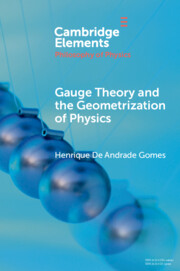Gauge Theory and the Geometrisation of Physics
This Element is broadly about the geometrization of physics, but mostly it is about gauge theories. Gauge theories lie at the heart of modern physics: in particular, they constitute the Standard Model of particle physics. At its simplest, the idea of gauge is that nature is best described using a descriptively redundant language; the different descriptions are said to be related by a gauge symmetry. The over-arching question this Element aims to answer is: why is descriptive redundancy fruitful for physics? I will provide three inter-related answers to the question: ``Why gauge theory?'', that is: why introduce redundancies in our models of nature in the first place? The first is pragmatic, or methodological; the second is based on geometrical considerations, and the third is broadly relational.
Product details
January 2025Paperback
9781009014083
84 pages
229 × 152 × 4 mm
0.135kg
Available
Table of Contents
- 1. Introduction
- 2. Why gauge? A Noether, methodological reason
- 3. Gauge theory and the geometry of fiber bundles
- 4. Why gauge? a geometrical reason
- 5. The Aharonov-Bohm effect, non-locality, and non-separability
- References.


